How Big Is a Coffee Scoop?
You’ve heard all the fuss about weighing coffee beans before you brew. But maybe you don’t have a scale. Or maybe you simply lack that kind of patience first thing in the morning. So you turn to a coffee scoop.
But exactly how big is a coffee scoop? Well, it varies.
In this article, I’ll explain why experts prefer weighing coffee rather than scooping. But first, let’s look at how you can make coffee using a scoop.
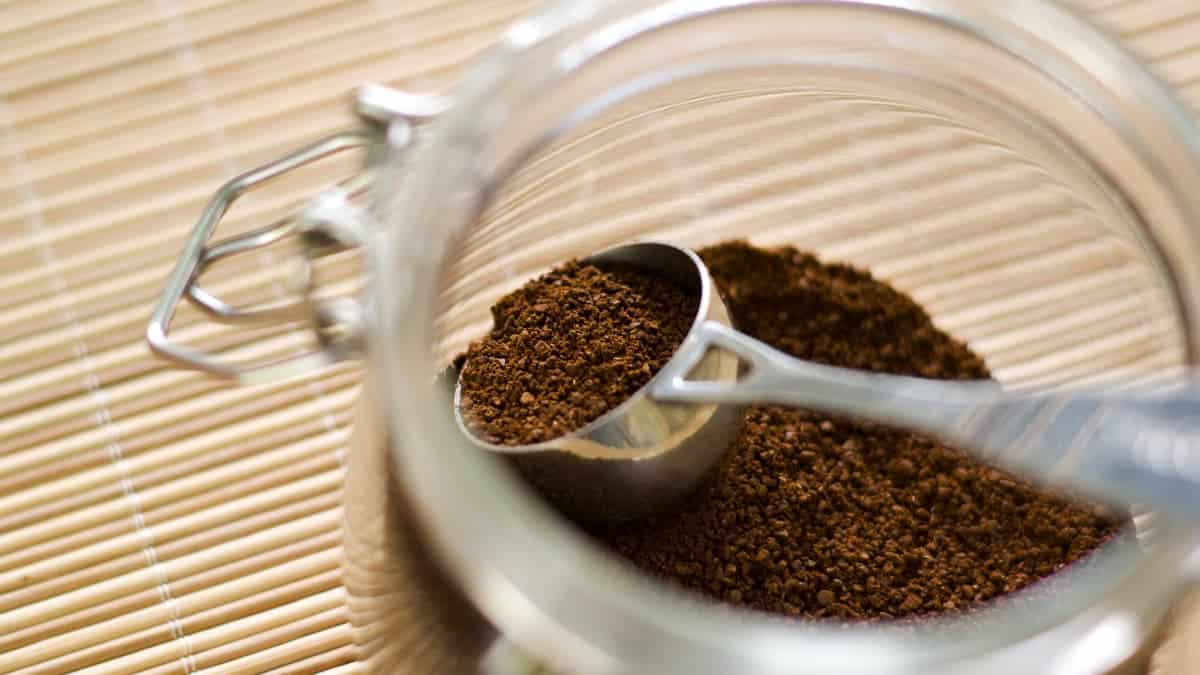
Key Summary: The Coffee Spoon Measure
- A regular-sized coffee scoop is roughly equal to two tablespoons of coffee
- Exact measurements vary from scoop to scoop
- It’s easy to make coffee with a standard-sized coffee scoop
What Size Is a Coffee Scoop?
How big is a coffee scoop? You’d think that would be an easy question with an easy answer. But the reality is there are many differences between coffee scoops.
Let’s start with the quick answer. Generally speaking, one coffee scoop holds two tablespoons of ground coffee. This measurement equals about 10 grams or 0.36 ounces of coffee.
But the exact measurement will vary. Why? Not all coffee scoops are created equal.
In my kitchen, I have a collection of coffee scoops. Plastic scoops, wood scoops — even a stainless steel scoop. Coffee scoops really do come in all different sizes, colors, and shapes.
Even two coffee scoops that look the same size might not measure the same amount of coffee.
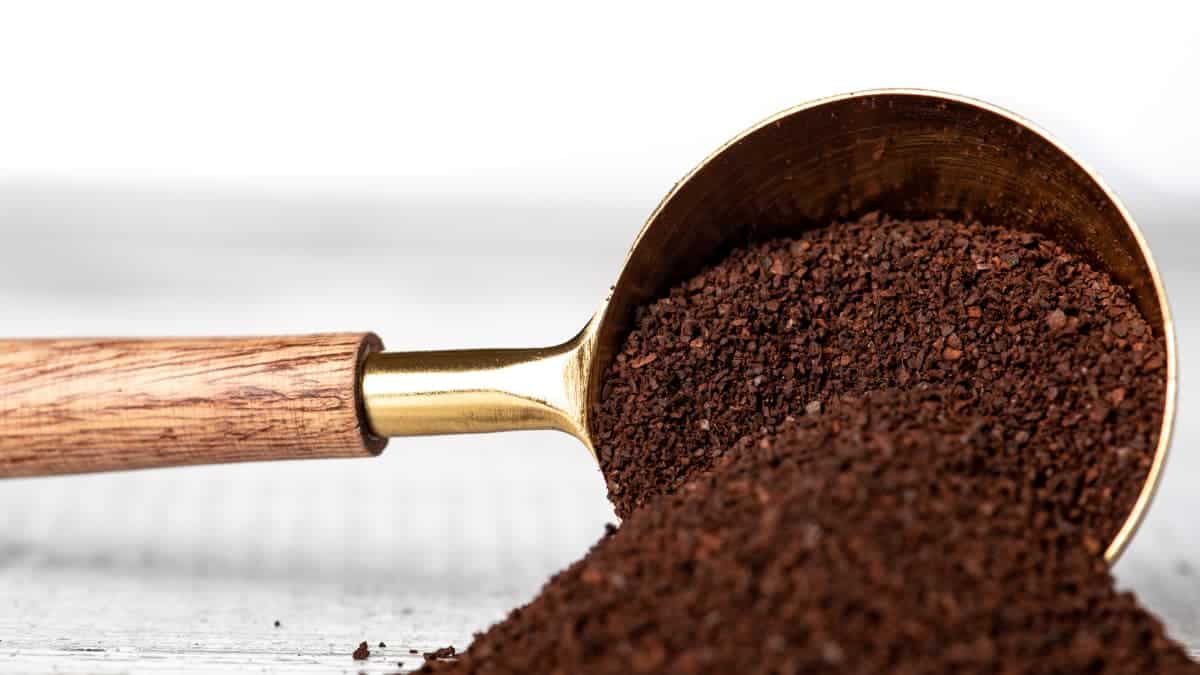
To verify my point, I compared all of my coffee scoops. Spoiler alert, the scoops do not measure the same volume.
Here’s how I ran the test. First, I filled each scoop with water. I then measured that amount with my tablespoon measuring set.
It quickly became obvious that different coffee scoops hold different amounts of liquid. In fact, the difference can be as great as 7 grams per coffee scoop.
These extra grams can add too much coffee to your ratio and completely change the way your brew tastes.
I used water to measure the volume of each scoop. This material ensured that each coffee scoop was level full.
When scooping dry material such as coffee grinds, it’s more difficult to get a consistent scoop.
A heaped scoop might be fine when you need an extra strong brew first thing in the morning. But consistency is key when you want to perfect your V60 game, for example.
If you don’t fill the coffee scoop completely, you’re getting less coffee in it. And if you overfill the coffee scoop, you’ll struggle to get a consistent coffee measurement.
Why is consistency so important? Too few coffee grounds will produce a weak, watery brew. Too many grounds can result in an over-extracted, bitter brew.
It gets more complicated when you measure coffee beans instead of ground coffee.
One reason is that coffee beans can vary greatly in size. There are tiny peaberry coffee beans and large Margogype beans.
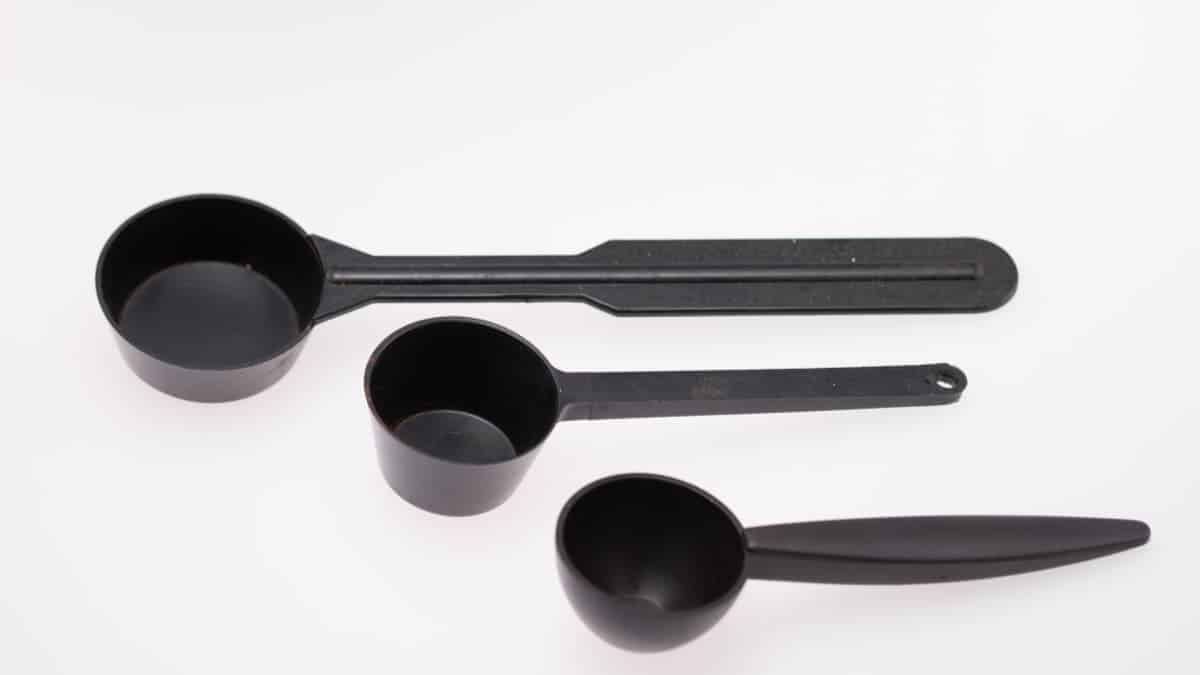
When you measure coffee by volume rather than weight, the space between those beans will vary. This difference will change the amount of ground coffee you have for the filter.
But there’s another reason why a scoop of beans doesn’t always equal a scoop of grounds. Coffee beans vary in mass and density.
A high-altitude coffee is denser and weighs more per volume. That change can completely throw off any coffee brewing recipe. Generally, it changes the taste of the coffee for the worse.
Also, coffee beans lose moisture during the roasting process. This chemical reaction means that roasted coffee varies in mass.
Even after drying, green coffee still contains about 11% humidity. During the roasting process, coffee beans crack. Water in the cell structure of the bean escapes as steam.
The moisture content can drop to as low as 3% per bean. That’s why roasted coffee weighs so much less than green coffee beans – the moisture is no longer there.
The longer coffee is roasted, the lower the humidity content will be, and the lighter the beans will be.
To be clear: that’s lighter in weight, not color. One tablespoon of dark roast coffee will weigh less than one tablespoon of light roast.
And a difference in densities will change how much coffee you actually get in a scoop. What’s the takeaway here? Measure coffee grounds by weight, not scoop.
But let’s say you don’t have a scale, don’t like crunching numbers, or you’re just in a rush. I’ve certainly been there. Especially when traveling since it’s not always possible to take my scale with me.
If you don’t have a scale, the coffee scoop might be your best alternative. So what size scoop should you use? Let’s take a look.
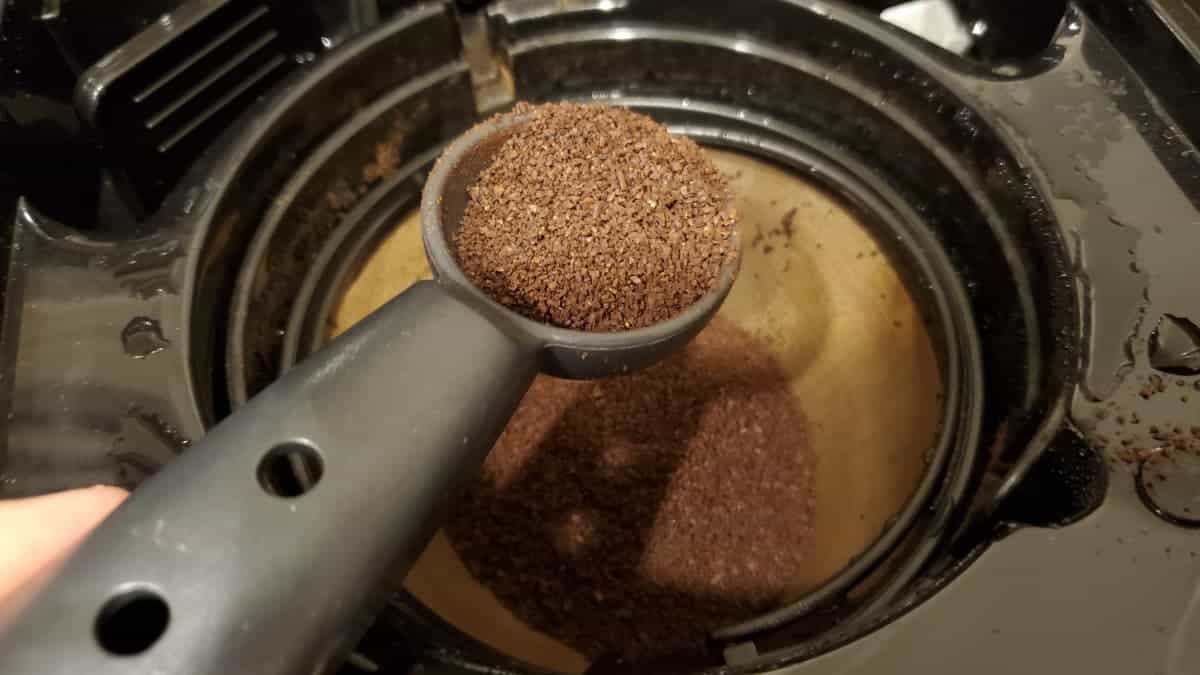
What Size Scoop Should You Use To Make Brewed Coffee?
You can make adjustments for almost any size coffee scoop. But you might want to start by using a standard spoon. In other words, one that holds two tablespoons of ground coffee.
Two tablespoons of ground coffee will put about 10 grams of ground coffee into your filter. From there, you can figure out the ratio of how much water you should use to brew your coffee.
How much coffee you use will depend on your coffee brewing method. (I’ll go into detail about that later.) The amount of grounds also determines coffee strength.
Before you start measuring coffee grounds, you need to know how much your coffee scoop can hold. To find this measurement, follow the experiment I mentioned earlier.
First, fill the coffee scoop with water. Then put that liquid in a standard measuring spoon. You’ll see if it fills up the measuring spoon or comes up short.
This test will give you a general idea of how many tablespoons fit inside that scoop. You can then adjust your coffee measurements accordingly.
Also, don’t be surprised if you see that one set of measuring spoons is different from another! Measuring by volume is never as accurate as measuring by weight.
For many coffee drinkers, the best coffee scoop is a stainless steel coffee scoop. It lasts long and doesn’t discolor like plastic scoops sometimes do.
I would also suggest using a deeper, narrower scoop rather than a shallow, wider scoop. (The spoon that comes with an AeroPress is a good option.) A smaller surface area at the top of the scoop reduces overfilling inconsistencies.
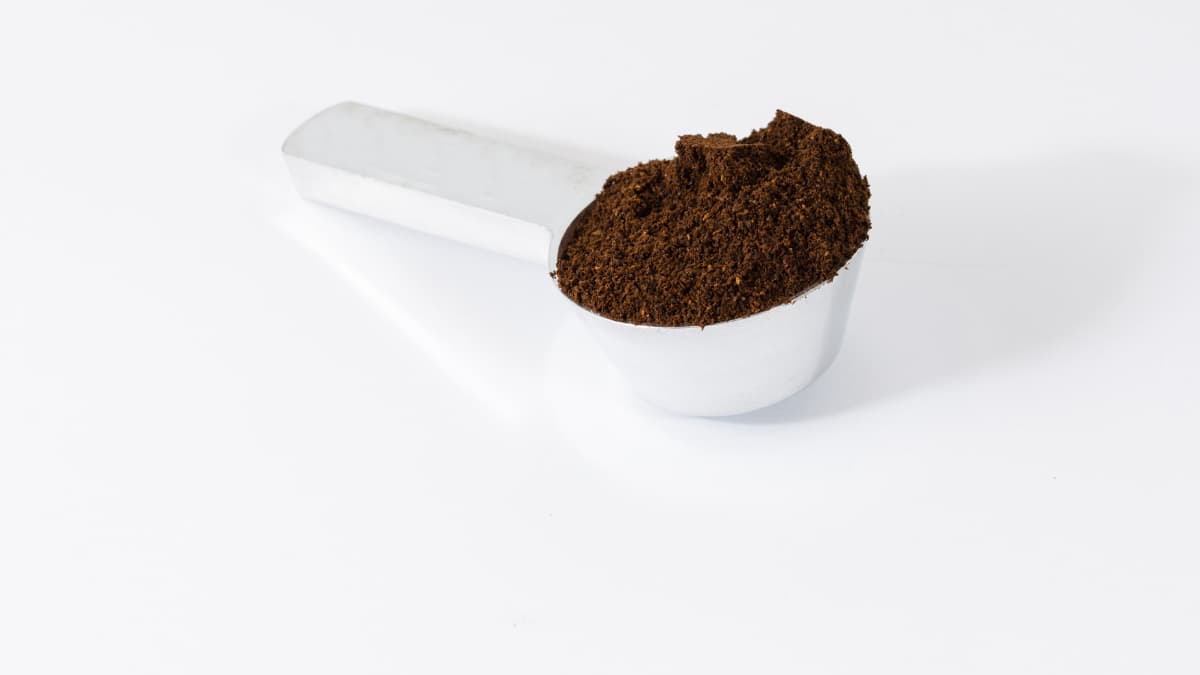
Making Coffee Using a Regular-sized Coffee Scoop
If you want to make a perfect cup of coffee with a standard scoop, you can easily figure out the water/coffee ratio. One scoop is about two tablespoons, or 10 grams, of coffee grounds.
The Specialty Coffee Association recommends using 8.25 grams of coffee grounds to 5.07 fluid ounces of water.
Of course, that’s a smaller volume of liquid than the average coffee cup. But it does give a foundation for calculating brewing ratios.
What does the water/coffee ratio mean? It’s simply the amount of water compared to the amount of coffee used for brewing a perfect cup of coffee.
So how many scoops of coffee grounds does that translate to? You can use one scoop of ground coffee for every small coffee cup (6 fluid ounces).
If you want to make an 8-ounce coffee mug you need to increase the amount and use 1 1/3 scoops of coffee grounds.
That’s just a general starting point, though. If you want stronger coffee, you may want to adjust the ratio or use a different brewing method.
Each brewing method uses different water-to-coffee ratios. What are the ratios for different brewing methods? Here are the recommended coffee ratios for one cup of coffee (using 8 ounces of water).
Drip coffee maker, intense: 15.7 g of coffee grounds or about 1.5 scoops
Drip coffee makers, normal brew: 13.9 g of coffee grounds just under 1.5 scoops
French Press: 19.7 g of coarse-ground coffee, or two standard coffee scoops
Pour over: 15.7 g or 1.5 scoops
As you can see, it’s hard to measure the exact amount of coffee when using a standard coffee scoop. Weighing will always give you a more accurate measurement.
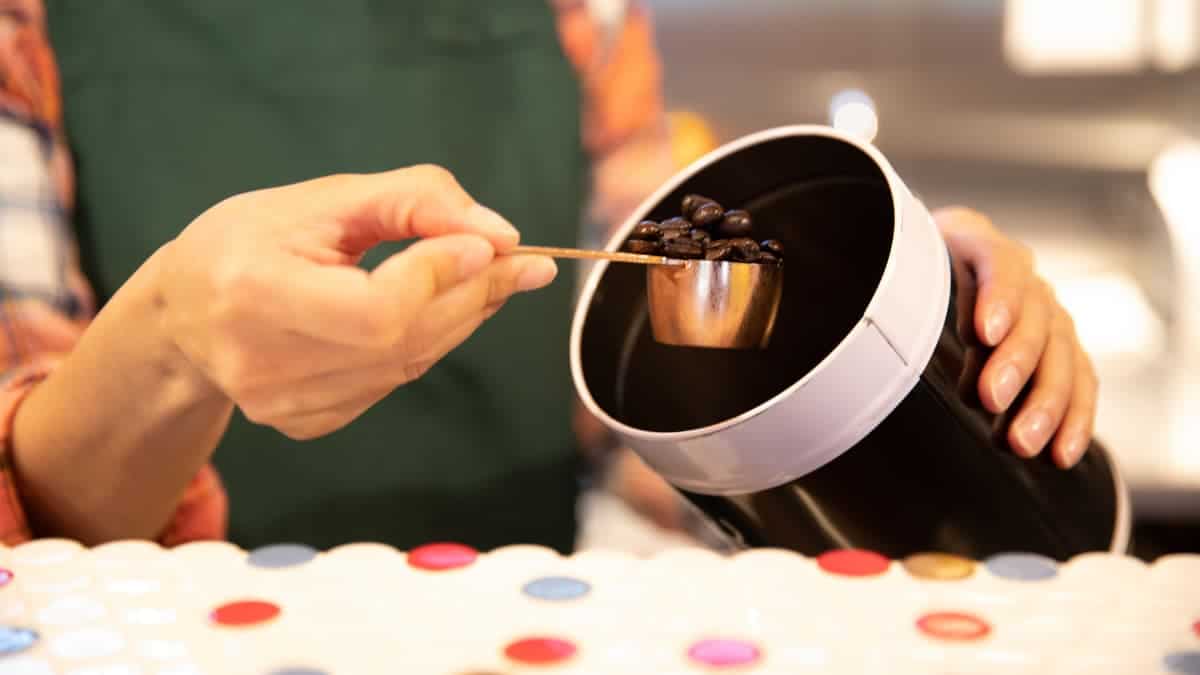
If you use a scoop, experiment to find the perfect measurement for your brew method. Record that measurement for future scooping consistency.
Also, remember that you need to adjust the grind size according to the brewing process.
For example, a French Press needs coarse-ground coffee. An espresso machine calls for finely ground coffee. And a medium grind is perfect for a drip coffee maker.
Of course, these are the measurements for a single cup of coffee. If you want to make multiple cups, adjust the amount of coffee in proportion to the water.
It may be easier to use a measuring cup rather than spooning out all those tablespoons of coffee. This hack comes in handy when making a large volume of coffee in electric coffee makers.
Frequently Asked Questions: Coffee Scoop Size
How many tablespoons in a coffee scoop?
Unfortunately, there’s no definitive answer. But a typical coffee scoop usually holds two tablespoons of ground coffee. The standard coffee scoop size measures the amount of grounds you need for one small cup of coffee.
How much water per scoop of coffee?
You can start by using six ounces of water per standard scoop of coffee. Then, adjust your recipe according to your tastes and cup sizes. Each coffee drinker may have to try varying water/coffee ratios to find their perfect cup.

